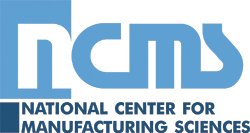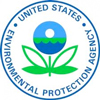Historical Articles
March, 1954 issue of Plating
Tricks of the Trade
A Plating Technique for Examining
Fine Wire Cross SectionsA.A. Wisco, Metallurgical Engineer, Westinghouse Electric Corp., Bloomfield, N.J.
The determination of degree of roundness of fine wire such as nichrome, steel and tungsten presents a problem when the wire diameter is as small as 0.0005 inch. Actually, the human eye is able to determine roundness of specimens when the material in question is studied under a metallographic microscope. However, the mounting of the fine wire in some suitable fashion has always presented difficulties. Normal mounting techniques were found lacking in that consistently reproducible results could not be obtained.
It was found that the study of the cross sections of such fine wire was greatly facilitated by the use of an electroplating step. Plating of the wire gave it mass for easier handling and also provided an area which served to absorb the beveling effects that occur on the outer edges of specimens during preparatory polishing. The cross section of fine wire prepared in this manner was thereby provided with a flat non beveled surface.
Detailed plating steps are as-follows, the fine wire is mounted by winding several snug fitting turns or loops onto two contacts spaced vertically about 5 inches apart on a small plating rack. The space between each turn or loop is approximately 1/4 inch. The racked wire is then degreased, electrocleaned cathodically for a few seconds in practically any standard commercial electrocleaner. Care must be taken to assure that the fine wire is completely submerged in the electrocleaner before contact is made with the cathode rod to prevent the wire from burning through because of the high current density. After cleaning the wire is plated with nickel to a thickness of approximately 0.0001 inch. Nichrome wire is plated in the Wood chloride bath, steel and tungsten in a Watts’ type solution. Then the wire is copper plated in a rochelle salt-cyanide bath to attain a wire diameter of sufficient size for ease in handling. Deposits of 0.001 to 0.002 inch have been found satisfactory though more or lesser coating thicknesses may work equally as well. The plating provides a stiff wire which, when cut from the rack, can be mounted easily in Lucite, cross-sectioned and polished by standard metallographic practices.
Before samples so prepared are examined, they are etched in an ammoniacal peroxide solution to clean off any copper film which may have been smeared over the wire surface to be studied. (To a solution of concentrated ammonium hydroxide, diluted with an equal part of water, hydrogen peroxide is added on the basis of 10 ml of H2O2 per 100 ml of diluted NH4OH.) Examples of wire prepared by the technique outlined above are shown in the photograph. In the ”out-of-round” wire (a) one can see easily that the cross section is not round; the actual difference from maximum diameter to minimum diameter is only 0.0001 inch, but magnification to 1000x reveals this variation very easily. Section (b) represents a round cross section.
The method is useful, not only in the study of wire quality but also in the study of-die contour, die wear as affected by varying lubricants, etc. Irregular cross sectional shapes such as points caused by chipped dies and other die defects can be seen clearly. The steps given above were found extremely useful in studies of certain fine wires. Variations in the plating procedures may have to be employed where the metal of interest may be other than those described.
 |
 |
 |
 |
 |
| Home | Subscribe | Regulations | Compliance Assistance | News | Resources | Resource Locators | Directories | Online Training | About | Search | NASF.org |
The information contained in this site is provided for your review and convenience. It
is not intended to provide legal advice with respect to any federal, state, or local regulation.
You should consult with legal counsel and appropriate authorities before interpreting any
regulations or undertaking any specific course of action.
Please note that many of the regulatory discussions on STERC refer to federal
regulations. In many cases, states or local governments have promulgated relevant rules and
standards
that are different and/or more stringent than the federal regulations. Therefore, to assure full
compliance, you should investigate and comply with all applicable federal, state and local
regulations.

